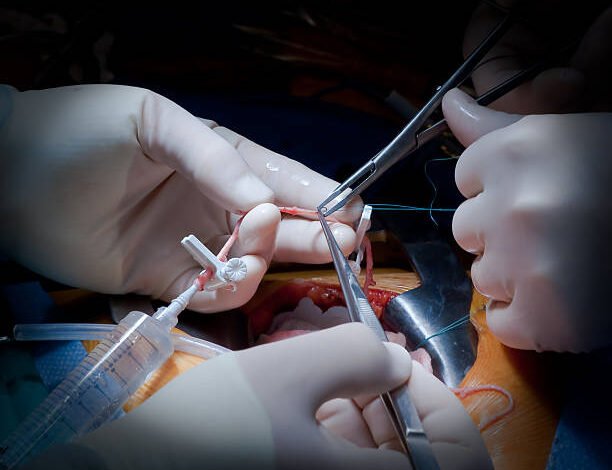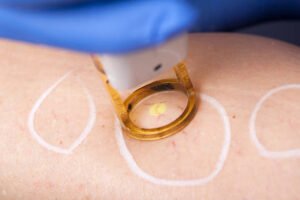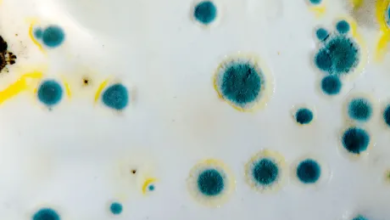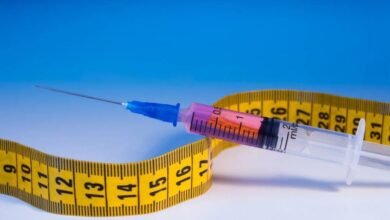
Vascular Surgery in Abu Dhabi plays a crucial role in our overall well-being. Our veins and arteries are responsible for transporting blood throughout the body, delivering oxygen and nutrients to vital organs and tissues. When these blood vessels become compromised due to various conditions, it can lead to serious health issues. Vascular surgery may be necessary to treat these conditions, but how do you know when it’s time to seek surgical intervention? In this article, we will explore the signs, symptoms, and factors that may indicate the need for vascular surgery.
1. Understanding Vascular Health
Vascular health refers to the condition of the blood vessels that carry blood throughout the body. These blood vessels include arteries, veins, and capillaries, all of which play critical roles in maintaining blood flow and overall circulation. Proper blood flow is essential for the health of organs and tissues, and when these blood vessels become damaged or obstructed, it can lead to a variety of health problems.
2. What is Vascular Surgery?
Vascular surgery is a specialized area of surgery that focuses on the treatment of diseases or conditions affecting the blood vessels. This can include repairing, bypassing, or removing blockages from arteries and veins. Vascular surgery is often recommended for conditions such as atherosclerosis, aneurysms, and varicose veins, among others. It can be performed using traditional open surgery or minimally invasive techniques, depending on the condition being treated.

3. Signs and Symptoms That May Indicate a Need for Vascular Surgery
Certain symptoms can signal that your vascular health may be compromised and that vascular surgery might be necessary. These signs should not be ignored, and if you experience any of them, it is important to consult with a healthcare provider. Some common symptoms include:
A. Leg Pain or Cramping
Leg pain, particularly when walking or during physical activity, is a common symptom of poor circulation. This could be a sign of peripheral artery disease (PAD), a condition where the arteries in the legs become narrowed or blocked, reducing blood flow.
B. Swelling in the Legs
Swelling in the legs, particularly if it is persistent or worsening, could indicate a problem with your veins. Conditions like deep vein thrombosis (DVT) or chronic venous insufficiency (CVI) may lead to swelling, which can become more pronounced over time.
C. Cold Feet or Hands
Feeling cold in your extremities, especially if it’s not related to environmental factors, could be a sign of reduced blood flow. This symptom is common in individuals with vascular diseases, as restricted blood flow can prevent the body from properly regulating temperature.
D. Skin Changes
Skin discoloration, ulcers, or open sores on the legs can signal a vascular issue, such as PAD or CVI. These conditions can cause poor circulation, leading to skin damage and difficulty healing.
E. Varicose Veins
Varicose veins are swollen, twisted veins that can be seen just beneath the skin. While they are often a cosmetic concern, they can also signal underlying vascular problems, such as chronic venous insufficiency. Severe varicose veins may require surgical intervention to alleviate symptoms and prevent complications.
4. Risk Factors for Vascular Diseases
Several factors can increase the risk of developing vascular diseases, which may eventually require surgery. Some of the most common risk factors include:
- Age: As we age, the blood vessels become more prone to damage, narrowing, or weakening.
- Family History: A family history of vascular disease can increase your likelihood of developing similar conditions.
- Smoking: Smoking accelerates the process of plaque buildup in arteries, increasing the risk of atherosclerosis and other vascular problems.
- Obesity: Excess weight puts extra strain on the blood vessels, contributing to the development of conditions such as PAD and varicose veins.
- High Blood Pressure and Diabetes: Both of these conditions can damage blood vessels over time, increasing the risk of needing vascular surgery.
5. How is Vascular Disease Diagnosed?
If you’re experiencing symptoms or are at high risk for vascular diseases, your doctor may recommend several diagnostic tests to assess the health of your blood vessels. Common diagnostic procedures include:
A. Ultrasound
Ultrasound imaging is a non-invasive method used to examine blood flow in arteries and veins. It can help identify blockages, blood clots, or abnormal blood flow patterns.
B. Angiogram
An angiogram is an imaging test that uses X-rays to visualize blood vessels. A contrast dye is injected into the blood vessels to make them visible on the X-ray images, allowing doctors to detect blockages or aneurysms.
C. CT or MRI Angiography
These advanced imaging techniques use computer-generated images to provide detailed views of the blood vessels. They are often used to diagnose complex vascular conditions that may require surgery.
6. When is Vascular Surgery Necessary?
Vascular surgery may be recommended if your condition is severe or doesn’t respond to other forms of treatment, such as medication or lifestyle changes. Some of the situations where surgery may be necessary include:
- Severe Blockages or Narrowing of Arteries: When blood flow is significantly restricted, surgery may be required to remove blockages or bypass narrowed areas of the artery.
- Aneurysms: If an aneurysm (a bulging, weakened area in a blood vessel) is large or growing, surgery may be needed to repair or remove it before it ruptures.
- Severe Varicose Veins: In cases where varicose veins cause significant pain, discomfort, or skin ulcers, surgical intervention may be needed to improve circulation and alleviate symptoms.
- Uncontrolled Venous Insufficiency: When chronic venous insufficiency causes significant pain, swelling, or ulcers, surgery may be the best option to restore proper blood flow.
7. Types of Vascular Surgery
Vascular surgery is a broad field with several types of procedures designed to treat different vascular conditions. Some of the most common types of vascular surgery include:
A. Endovenous Laser Therapy (EVLT)
This minimally invasive procedure uses laser energy to close off varicose veins, improving circulation in the affected area. It is often used for less severe cases of varicose veins.
B. Bypass Surgery
Bypass surgery is performed to reroute blood flow around blocked arteries. This is often used for patients with severe PAD to restore adequate circulation to the affected limb.
C. Angioplasty and Stent Placement
Angioplasty involves using a balloon to open up narrowed arteries, and a stent is often placed to keep the artery open. This procedure is commonly used for atherosclerosis and other conditions that cause artery narrowing.
D. Aneurysm Repair
Surgical repair of an aneurysm involves removing the weakened section of the blood vessel and replacing it with a graft to prevent rupture and restore normal blood flow.
8. Recovery After Vascular Surgery
The recovery process after vascular surgery depends on the type of procedure performed and the patient’s overall health. Most patients are able to return to normal activities within a few weeks, although it may take several months to fully recover. During this time, it’s important to follow the surgeon’s aftercare instructions, which may include taking prescribed medications, avoiding strenuous activities, and attending follow-up appointments.
Conclusion
Vascular surgery can significantly improve quality of life for individuals suffering from vascular diseases. If you experience symptoms such as leg pain, swelling, cold extremities, or varicose veins, it’s essential to seek medical attention. Early diagnosis and intervention can help prevent complications and restore normal blood flow. By understanding the signs of vascular problems and when surgery may be necessary, you can take proactive steps to protect your vascular health and overall well-being.


